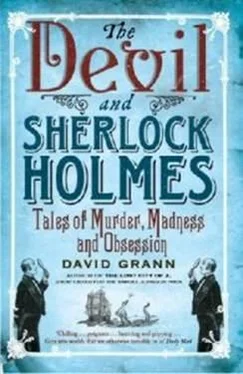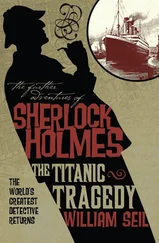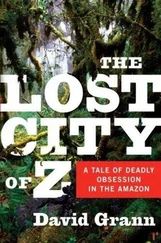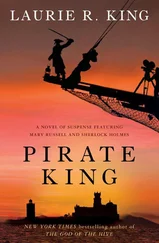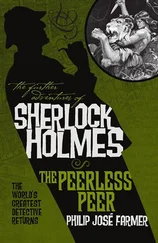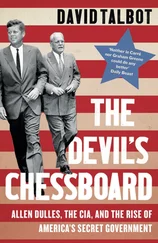In the past, the city sometimes tried to assuage concerns about New York’s water system, but Mayor Michael Bloomberg noted at a 2003 press conference that the aging pipelines were “very vulnerable” and that “this city could be brought to its knees if one of the aqueducts collapsed.”
Anthony DelVescovo, the project manager who has been working on City Tunnel No. 3 for nearly fifteen years, echoed Bloomberg’s warning. “What no one knows is that we’re facing a potential apocalypse,” he told me. “It’s a race against the clock.”
It is hard to imagine a city without water, its faucets empty, its hydrants dry, its plazas filled not with fountains but with citizens suffering from diseases spread by dirt and desiccation-to imagine, as Charles Einstein put it in the title of his 1964 futuristic novel, “The Day New York Went Dry.”
For much of its history, however, New York was a parched city. Though surrounded by the sea, its principal supply of freshwater remained, as late as the eighteenth century, a single fetid pool in lower Manhattan called the Collect Pond. Human waste was dumped into it, along with the occasional dead body. Distribution of water was dominated by racketeers known as teamen, who roamed the streets with giant casks, gouging customers. In 1785, with the city’s population reaching nearly thirty thousand, the New York Journal published an open letter to government officials complaining that the water supply had become a “common sewer.” One daily newspaper declared that it was “sickly and nauseating,” adding, “The larger the city grows, the worse this evil will be.”
Even as the paper warned that a “plague will make a yearly slaughter until you furnish better water,” pestilence spread through the squalid streets. In 1798, yellow fever wiped out two thousand New Yorkers, and venders wandered the streets yelling, “Coffins of all sizes!” The plague returned in 1805, 1819, and 1822. “New Yorkers are like the rich man told of in the Parable,” one resident noted in the local paper. “They have no clean cool water to slack their thirst when the flames of the plague are devouring their vitals.”
One summer morning in 1832, two children woke up in Manhattan with severe pain in their intestines. They stopped urinating and were overcome by thirst; they began to vomit and their skin turned blue. By the next day, they were dead, and two days later so was their mother.
Asiatic cholera, an excruciating disease that is spread, in large part, by water contaminated with feces, had struck. In barely a month, two thousand New Yorkers were dead, their bodies marked by a bluish tinge and puckered extremities; more than a hundred thousand residents-half the city’s population-fled to outlying villages. By the time the scourge ended, the death toll had reached more than three thousand. A group of doctors who visited the city at the time reported a “constant and imploring” cry: “Cold water, cold water, give us cold water!”
Finally, in the winter of 1834, the Common Council vowed to locate new sources of water. But before plans got under way a fire broke out near Wall Street. Without enough water to extinguish it-the rivers were frozen solid-the flames leaped from roof to roof, carried by a gale-force wind. Within minutes, the fire had spread from Exchange Place to Water Street, then on to Front and South Streets, and still onward. (The smoke was visible as far away as Philadelphia.) The fire burned for twenty-four hours, and after it had consumed nearly seven hundred buildings and caused such mass looting that the military was called in, roughly a third of New York City lay in ruins. One witness, who called it “the most awful calamity which has ever visited these United States,” wrote, “I am fatigued in body, disturbed in mind, and my fancy filled with images of horror which my own pen is inadequate to describe.”
And so at last the city began to construct its first aqueduct.
By today’s standards, the Croton Aqueduct is modest in scope, but at the time it was considered an architectural marvel. Begun in 1837 and completed in 1842, it extended more than thirty miles, running from the Croton Reservoir down the east bank of the Hudson River-an elegant, eight-by-seven-foot brick pipeline. When it was finished, church bells rang out across the city and thousands poured into the streets to parade past new fountains, whose water sparkled in the sun. Philip Hone, who eventually became mayor of New York, wrote in his diary, “Nothing is talked of or thought of in New York but Croton water… Water! water! is the universal note which is sounded through every part of the city, and infuses joy and exultation into the masses.”
Twelve years later, however, the city’s demand for water again exceeded supply, and the pressure in the pipeline fell so low that the water could no longer reach the third story of a building. By 1882, with thousands of immigrants arriving each week, the Times pleaded, “More Water Wanted,” adding, “The health of families… was jeopardized because sufficient water could not be secured.” Yet, unlike the previous century, when the city had looked on impassively at civic problems, there was now an almost evangelical faith in human progress. In 1905, Mayor George McClellan, who had just inaugurated the city’s first subway system, laid out a vision of “an additional supply of pure and wholesome water,” a vision so bold that it struck many as evidence of hubris. At an estimated cost of a hundred and eighty-five million dollars-3.7 billion in today’s dollars-it would be the largest municipal water system in the world. In 1907, at the groundbreaking, McClellan declared, “The course of human events is not permanently altered by the great deeds of history, nor by the great men but by the small daily doings of the little men.”
Before long, thousands of laborers arrived in the Catskill Mountains and began clearing away vegetation. Under the expansive McClellan Act, which one judge complained gave “power that the Almighty would not delegate to an archangel,” the city appropriated more than twenty-five thousand acres of land, including hundreds of homes around the area of Shokan, which is just south of Woodstock. Nine villages were torn down, some burned to the ground, and nearly three thousand residents driven out; even cemeteries were dug up. “The trees are all cut down and the village is fading as a dream,” the Kingston Freeman reported.
Then dams were built, water was diverted from streams in the Catskills, and rain was collected. The entire elevated basin was flooded, creating one of several reservoirs that, together, are nearly as large as the island of Manhattan. In photographs of the Shokan area taken before the flooding, the land is green and expansive; months later, it is covered by a glasslike inland sea.
Meanwhile, sandhogs burrowed through mountains and under hillsides to construct the Catskill Aqueduct, a ninety-two-mile conduit that slopes gently downhill from Shokan to Storm King Mountain and then down to White Plains. At one point, it crosses below the Hudson River, at a depth of eleven hundred feet-an achievement that New York City’s new mayor, William Gaynor, called “one of the greatest engineering feats in history.” The hardest part of the project, however, was yet to come. According to the engineers’ elaborate design, water would flow from the aqueduct into a reservoir in Yonkers. From there, it would be channelled into another tunnel-one dug deep beneath the city, and able to withstand the pressure of more than half a billion gallons coursing through it each day. This water would then begin flowing upward, into smaller and smaller pipes, ultimately discharging into the millions of faucets around the city. Construction on what became known as City Tunnel No. 1 began in 1911. Many men went down once and never went back. Those who stayed received about two dollars a day. Once, under the strain, a riot erupted twelve hundred feet underground, and workers attacked each other with picks and shovels.
Читать дальше
